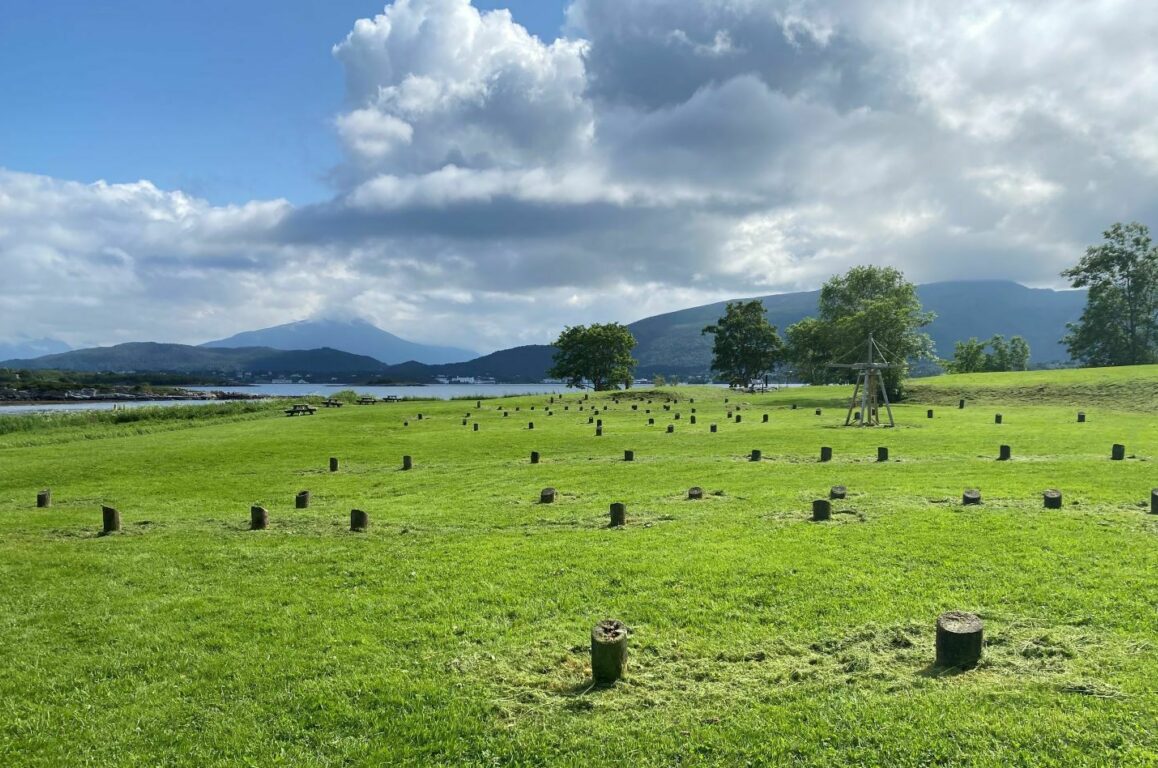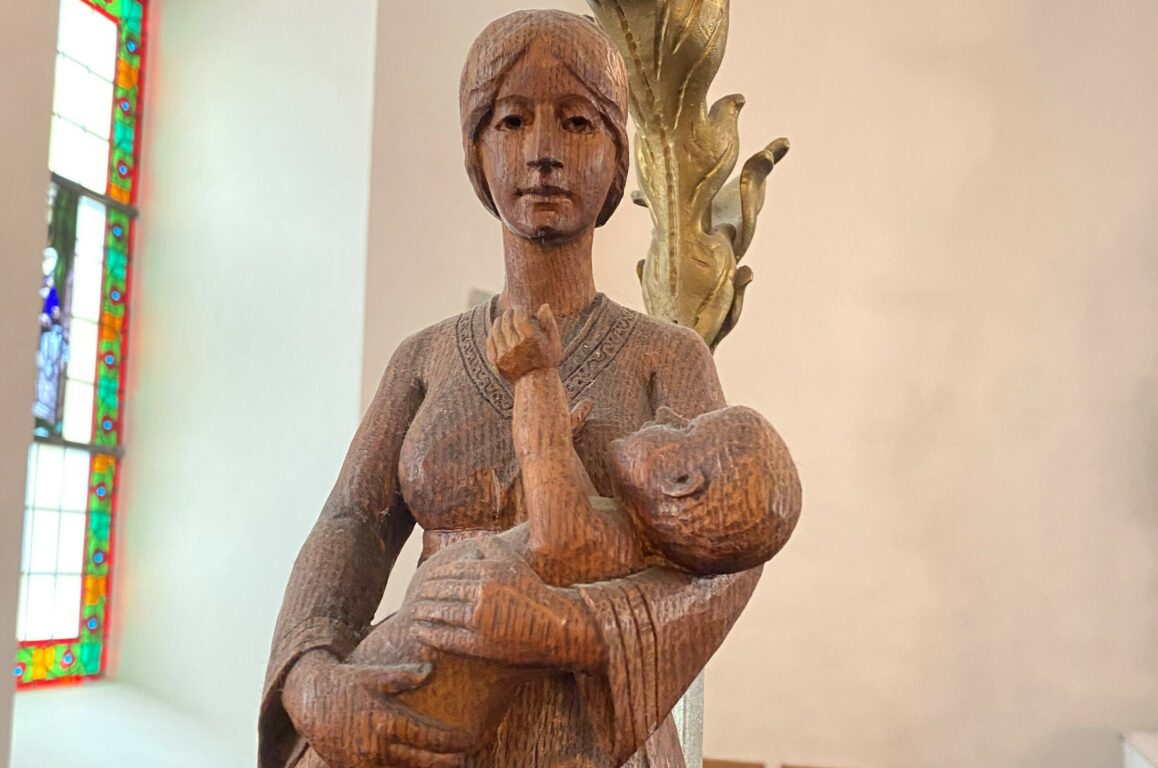Borgund
Phone
+47 90576774Pilegrim stamp:
Café:
Guided tours:
Contact church:
phone: +47 92065380
mail: kari.vatne@kyrkja.alesund.no
Contact museum:
phone +47 90576774
mail: jan-kare@vitimusea.no
Welcome to the key city of Borgund in Ålesund municipality
Borgund is an exciting place to explore. Here there is a museum that gives an insight into many layers of history, and a church town with roots dating back to pre-Christian times. Here you will find more information about Sunnmøre museum with the Medieval Town and Borgund church.
Church town
Borgund was probably an old religious and cultural center in pre-Christian times due to its central location in Sunnmøre. It is assumed that there have been churches here since the first Christian era, i.e. around the year 1000. In the last half of the 12th century, there were probably four churches in Borgund, as many as there was in Oslo at the time. Someone has obviously tried to establish an ecclesiastical center between Bergen and Trondheim. This became more important as Selje bishopric and monastery lost their influence.
The four churches were:
- Peter's Church: The walls of this church make up a section of Borgund Church that dates from around 1130.
- Margareta Church was located on the headland at Klokkersundet, below the medieval museum. The site is partially excavated. The walls from this church were in 1632 used to build what is now the choir in Borgund Church.
- Kristkyrkja: It is likely the walls of this church that has been found by the road down to the vicarage.
- Matthew's church: Physical remains of this church have not been found, but the church is mentioned in English medieval written accounts.
The churches fell into disrepair in the late Middle Ages after Borgund lost its function as a central trading hub. Only St. Peter's Basilica remained. together with parts of the walls from the Margareta church, it forms the foundation of the current Borgund Church. The nave in the south was built in 1868.
Was there a monastery here?
With the extensive Skrei fishing industry in Borgundfjorden, the town and church town grew. Towards the end of the 12th century, four stone churches stood here, all probably clad with marble that was quarried on the island of Humla just across the fjord. The churches of Borgund were Christ Church, Matthias Church, Margaret Church and Peter Church. The last one is now the east wing of Borgund Church as it appears today. In accordance with tradition, there was also a monastery here, and at the end of the 13th century there is mention of a brother Arne in Borgund. It is more likely, however, that it was a hospice and not a monastery. This allowed pilgrims to get shelter and food on their way to their destination.
The building of these four churches took years and was expensive. Stone buildings were not common in Møre. Similar churches were built in Åheim, in Herøy, in Ulstein and not least in Giske. The magnates on the island had a marble church built there sometime in the 12th century, and in 1345 Pope Clemens gave six hundred days' indulgence to pilgrims who visited the church.
The medieval city
In the 13th century, the town of Borgund flourished. Merchant ships came from other parts of the country and abroad. Large quantities of dried fish from Brogund found its way into Europe. The fasting rules of the Catholic Church ment that the demand for fish was high. Dried fish could also be stored for years and still be perfectly edible. Everything looked promising, but out on the horizon dark clouds loomed.
The weather got colder. The fishing started failing. Times were not as good and the people in the town were unable to maintain the churches. Archbishop Eiliv (1309-32) wrote a letter that gave 30 days of indulgence to those who are involved in rebuilding the dilapidated Matthias Church.
In 1349, disaster struck. The Black Death. More than half of the inhabitants of Borgund and Sunnmøre died. And in Bergen, the Hanseatic people settled down and the Sunnmørings begins to travel there with their goods. Trade in Borgund declined, and towards the end of the 16th century it was not much left in the town of Borgund. Of the churches, only the parish church, Peterskyrkja, was in use, and in the 1640s, The Margaret Church was demolished and the stones were used to build Peterskyrkja. The parish of Borgund was large and rich, but the town of Borgund was gone, and now Ålesund is growing.
Pilgrimage to Borgund
From Ålesund town by the steps to Aksla, you can follow a wellmarked path to Borgund. There are signs with the pilgrim mark all along the way. It is about 6 km long and it's an easy walk, so no need for heavy boots - sneakers will do. You can plan your return to Ålesund or journey furter north with the travel planner FRAM.
Accommodation
Hotel Brosundet is certified as a pilgrim hotel. Here you will get 15% discount on dynamic prices. There will subsequently be more pilgrim hostels and hotels in the vicinity, at different prices and qualities.
Contact Borgund
Kari Vatne phone +47 92065380, mail: kari.vatne@kyrkja.alesund.no


